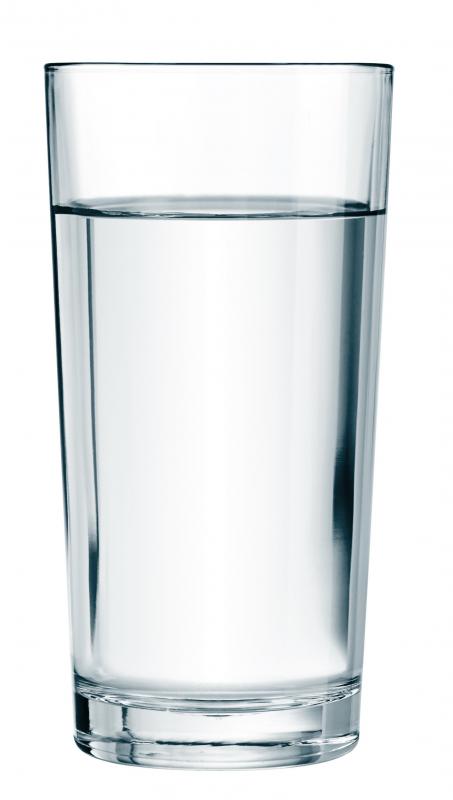At AllThingsNature, we're committed to delivering accurate, trustworthy information. Our expert-authored content is rigorously fact-checked and sourced from credible authorities. Discover how we uphold the highest standards in providing you with reliable knowledge.
What is the RoHS?
The RoHS is an acronym for the Restriction on Hazardous Substances, a guideline first established by the European Union in 2002. In 2007, the RoHS becomes law in all countries belonging to the EU and will restrict the use and disposal of products containing mercury, cadmium, hexavalent chromium, polybrominated biphenyls, polybrominated diphenyl ethers, and most importantly lead. Additionally, the RoHS will follow guidelines when trading with other countries and will purchase no products containing more than .1% of the listed substances.
Not all materials containing these substances are outlawed in the RoHS text. The guidelines for the purchase and disposal of materials apply specifically to lighting, computer and IT equipment, household appliances, toys, and sports equipment. Particularly with household equipment, lighting, and toys, disposal will depend upon the compliance of consumers and will be harder to regulate. Specific guidelines for disposal of listed materials are contained in another document, the WEEE, or Waste from Electrical and Electronic Equipment.

One purpose of the RoHS is to eliminate toxic substances from unprotected waste areas where they can pollute drinking water and air supply. Sometimes called the "lead law," the RoHS particularly concerns itself with the levels of lead that appear in the drinking supply. High levels of lead exposure can lead to hearing problems, reduced IQ and damage to the nervous system. Young children are particularly at risk, but even in adults, lead poisoning can result in kidney damage, abdominal pain and cramping, seizures, coma, and death.

By requiring manufacturers to find substitutions for components containing these substances, the RoHS hopes to maintain a more "green friendly" environment. Though the intentions are admirable, some notable exceptions to the use of these chemicals are a cause of concern among more stringent environmentalists. Ceramic devices, high melting point solders, and glass in fluorescent tubes all contain lead and are exempt from the rules. Some lamps containing mercury are also exempt in the European guidelines, as are batteries containing mercury or lead.
Since the RoHS requires companies trading with Europe to follow these guidelines, many other countries have adopted their own RoHS standards. California is the first state in the US to adopt an RoHS law. China's law is by far the most rigid, allowing very few exemptions. As its growing economy makes trading with China so advantageous, China's RoHS may ultimately change RoHS standards and exemptions set in other countries.
All companies bound by RoHS standards or trading with countries that employ them are now faced with the task of complying with these guidelines. In turn, an entire industry has grown up around the task of helping companies become compliant with the new laws. Some production must be completely rethought to exclude the use of certain chemicals, and testing of safer chemicals is underway to replace existing hazardous ones. In any country, adoption of the RoHS represents a progression in environmentally friendly thinking, and a step forward in making the world a little safer for all of us.
Frequently Asked Questions
What is the RoHS and why was it established?
The Restriction of Hazardous Substances (RoHS) is a directive initiated by the European Union to limit the use of specific hazardous materials found in electrical and electronic products. Established in 2003, its primary goal is to reduce environmental impact and enhance public health by restricting substances that could pose risks when disposed of or recycled.
Which substances are restricted under the RoHS directive?
RoHS restricts the use of ten substances: lead, mercury, cadmium, hexavalent chromium, polybrominated biphenyls (PBB), polybrominated diphenyl ethers (PBDE), bis(2-ethylhexyl) phthalate (DEHP), butyl benzyl phthalate (BBP), dibutyl phthalate (DBP), and diisobutyl phthalate (DIBP). These substances are known to be harmful to both the environment and human health.
How does RoHS compliance affect the manufacturing of electronic products?
RoHS compliance requires manufacturers to either eliminate or limit the concentration of the restricted substances in their products. This often involves changing production processes, sourcing alternative materials, and implementing strict supply chain management to ensure that all components meet the directive's standards, thereby making electronics safer for consumers and the environment.
Are there any exemptions to the RoHS directive?
Yes, there are exemptions to the RoHS directive for certain applications where alternatives are not yet viable or where the use of restricted substances is still deemed necessary for functionality. These exemptions are reviewed periodically to assess the feasibility of phasing out hazardous substances as technology advances and new alternatives become available.
What are the penalties for non-compliance with the RoHS directive?
Penalties for non-compliance with the RoHS directive can be severe and include fines, product recalls, and bans on selling non-compliant products in the EU market. The exact penalties vary by EU member state, as each country is responsible for enforcing the directive and setting its own fines and enforcement mechanisms.
How does RoHS differ from other environmental directives like REACH?
While both RoHS and REACH (Registration, Evaluation, Authorisation and Restriction of Chemicals) aim to protect human health and the environment, they differ in scope and focus. REACH is broader, dealing with chemicals in all products, not just electronics, and requires companies to register and provide information on the chemicals they use. RoHS is specific to electronic equipment and directly restricts the use of certain substances.
AS FEATURED ON:
AS FEATURED ON:












Discuss this Article
Post your comments